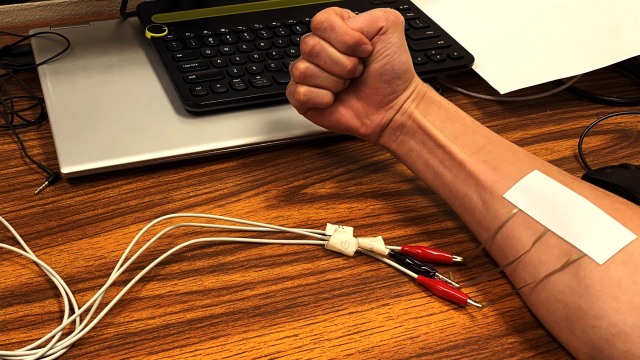While smartwatches and fitness trackers are probably the most well-known consumer tech for health monitoring, researchers from the University of Missouri published a study showing they can do the same thing… with a paper and pencil.
The study, which was published in Proceedings of the National Academy of Sciences earlier this month, detailed how a regular pencil and white copy paper can monitor metrics like heart rate, respiratory rate, glucose levels, body temperature, and even your sweat composition. The trick here is graphite, a common ingredient in pencil lead. It’s actually pretty good at picking up electrical signals too.
According to University of Missouri researcher Zheng Yan, existing skin-based biomedical devices usually are comprised of some sort of biomedical tracking element and a flexible material. In this case, the researchers told the St. Louis Post-Dispatch they created electrodes by drawing them in pencil on commercially available white paper, copying designs that are used by typical metal electrodes. Then, the researchers sprayed adhesive onto the paper, connected the DIY electrodes via cables to a computer, and recorded results.
The researchers found that the best results came from pencils containing 93 per cent graphite, which are relatively inexpensive when you compare them to say, a smartwatch or medical devices. The other benefit is that paper is easily dissolved in water and decomposes in about a week, meaning there’s less e-waste compared to other gadgets.
This isn’t the first time a group of researchers has realised that pencils and paper can be used for more than just writing or drawing. In 2015, a different team of researchers discovered that pencil lines could be used to measure how an object bends. In that instance, the goal was to see if you could accurately measure how far a book was opened or as a type of ad-hoc ruler.
Meanwhile, the University of Missouri researchers are envisioning things like home-based, personalised health care. However, the applications aren’t limited to health monitoring alone. According to the St. Louis Post-Dispatch, the researchers say the pencil-paper combo can also be used to harvest electricity from air humidity. The simplicity and wide availability of materials also mean there could be a wide range of additional potential use cases.
“For example, if a person has a sleep issue, we could draw a biomedical device that could help monitor that person’s sleep levels,” Yan said in a statement. “Or in the classroom, a teacher could engage students by incorporating the creation of a wearable device using pencils and paper into a lesson plan. Furthermore, this low-cost, easily customisable approach could allow scientists to conduct research at home, such as during a pandemic.”
That said, it’s a good reminder that doctors probably aren’t going to start drawing patterns on paper and slapping it on your skin anytime soon. This research is more of a proof-of-concept, and it could be years before someone finds a way to make this system readily available. For starters, the researchers say that the next step is further developing and testing how this method works with biomedical sensors.
